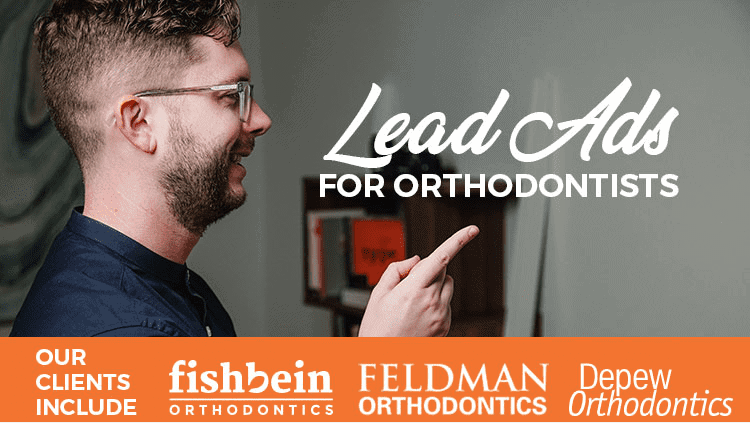In the world of digital marketing, Facebook ads have emerged as a powerful tool for businesses to reach their target audience. And for orthodontists, these ads offer a unique opportunity to connect with potential patients and grow their practice. In this comprehensive guide, we will explore the strategies and best practices for running successful Facebook ads specifically tailored for orthodontists. From defining your target audience to optimizing your ad copy, we will provide you with all the tools and insights you need to achieve marketing success. So, whether you’re a seasoned advertising pro or just starting on your orthodontic marketing journey, this guide is here to help you navigate the world of Facebook ads and unlock new growth opportunities for your practice.
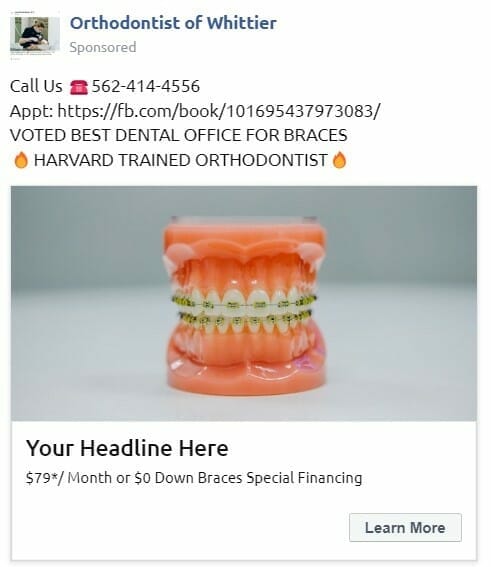
1. Understanding the Importance of Facebook Ads for Orthodontists
1.1 The rise of digital marketing and its impact on orthodontic practices
In today’s digital age, the way businesses market their services has significantly evolved. Orthodontic practices, like any other business, have recognized the importance of digital marketing for reaching their target audience effectively. Traditional advertising methods alone are no longer enough to stay competitive in the industry. With the rise of digital marketing, orthodontic practices have seen the benefits of utilizing online platforms like Facebook to promote their services and attract new patients.
1.2 Why Facebook ads are essential for orthodontists
Among the various digital marketing strategies available, Facebook ads have emerged as a powerful tool for orthodontists. Facebook, with its extensive user base, offers a unique opportunity to reach a large number of potential patients. The platform allows orthodontic practices to specifically target individuals based on their demographics, interests, and behavior, ensuring that their ads are seen by the right people. The wide reach and targeting capabilities make Facebook ads an essential component of any orthodontic marketing strategy.
1.3 The benefits of using Facebook ads for orthodontic marketing
There are several key benefits to using Facebook ads for orthodontic marketing. Firstly, Facebook ads allow orthodontists to effectively raise awareness about their services among their target audience. By creating visually appealing and engaging ads, orthodontists can capture the attention of potential patients and generate interest in their practice. Additionally, Facebook ads provide a cost-effective advertising solution compared to traditional marketing channels, allowing orthodontic practices to make the most of their marketing budget.
Furthermore, Facebook ads provide valuable targeting options that enable orthodontists to focus their advertisements on specific demographics, interests, and behaviors. This precision targeting ensures that ads are shown to individuals who are more likely to be interested in orthodontic treatment, increasing the chances of attracting new patients. Additionally, with Facebook’s robust analytics and data insights, orthodontists can continuously optimize their ads based on performance metrics, ensuring maximum effectiveness and return on investment.
1.4 Common misconceptions about Facebook ads for orthodontists
Despite the many benefits of Facebook ads for orthodontists, there are a few misconceptions that may deter some practices from utilizing this powerful marketing tool. One common misconception is that Facebook ads are only effective for reaching a younger audience. While it is true that Facebook has a large user base of younger individuals, the platform also caters to users of various age groups, making it suitable for targeting individuals of all ages who may be in need of orthodontic treatment.
Another misconception is that Facebook ads are complicated to set up and manage. While the platform does offer a wide range of targeting options and features, it is user-friendly and provides resources to guide orthodontists through the ad creation process. Additionally, there are professional Facebook ad agencies that specialize in managing Facebook ads for orthodontists, providing assistance to practices that may not have the time or expertise to navigate the platform themselves.
2. Defining Your Target Audience
2.1 Identifying the ideal patient persona for an orthodontic practice
Before diving into Facebook ad targeting, it is crucial for orthodontic practices to define their ideal patient persona. This involves understanding the demographics, characteristics, and motivations of the target audience they want to attract. By identifying their ideal patient persona, orthodontists can tailor their marketing messages and create ads that resonate with their target audience, increasing the chances of attracting quality leads and converting them into patients.
To define the ideal patient persona, orthodontists can start by analyzing their existing patient base. They can gather data on the age, gender, location, and other relevant demographics of their current patients. Orthodontists can also conduct surveys or interviews to gain insights into patients’ motivations for seeking orthodontic treatment. By combining this data with industry research and trends, orthodontists can create a clear picture of their target audience and use it as a foundation for their Facebook ad targeting strategy.
2.2 Utilizing demographic and interest targeting on Facebook
Facebook provides a wide range of targeting options that allow orthodontists to reach specific demographics and individuals with particular interests. By utilizing these targeting options, orthodontists can ensure that their ads are shown to individuals who are most likely to have an interest in orthodontic treatment.
Orthodontists can start by specifying the age range, gender, and location of their target audience. For example, if an orthodontic practice primarily serves teenagers, they can set their targeting to include individuals aged 13-19. Similarly, if the practice operates in a specific city or region, they can narrow down their targeting to only include users in that geographic area.
In addition to demographic targeting, orthodontists can also take advantage of Facebook’s interest targeting feature. This allows them to focus their ads on individuals who have shown interest in related topics such as dental health, oral care, or even specific orthodontic brands or products. By targeting individuals with relevant interests, orthodontists can increase the likelihood of reaching potential patients who are actively seeking orthodontic treatment.
2.3 Refining your target audience based on location and behavior
Refining the target audience based on location and behavior can further enhance the effectiveness of Facebook ad campaigns for orthodontic practices. Orthodontists can narrow down their targeting to specific locations, such as specific cities or neighborhoods, to reach individuals who are in close proximity to their practice. This is particularly beneficial for orthodontic practices with multiple locations or those looking to attract patients from a specific area.
Behavioral targeting is another powerful tool offered by Facebook. Orthodontists can target individuals based on their online behaviors, such as those who have shown an interest in orthodontics through online searches or engagement with related content. By reaching individuals who have exhibited specific behaviors related to orthodontic treatment, orthodontists can increase the chances of converting them into patients.
2.4 Creating custom audiences for better ad targeting
Creating custom audiences on Facebook allows orthodontists to reach individuals who have already interacted with their practice or shown interest in their services. This can be done through the use of a Facebook Pixel, a small piece of code that tracks website visitors and allows orthodontists to retarget them with relevant ads.
By creating custom audiences based on website visitors, orthodontists can retarget individuals who have already shown interest in their practice by visiting their website. This can be an effective strategy for reminding potential patients about the practice’s services and encouraging them to take action, such as booking a consultation.
Orthodontists can also create custom audiences based on engagement with their Facebook page or previous ad campaigns. By targeting individuals who have already engaged with the practice’s content or ads, orthodontists can increase the chances of reaching individuals who are familiar with their brand and more likely to convert into patients.
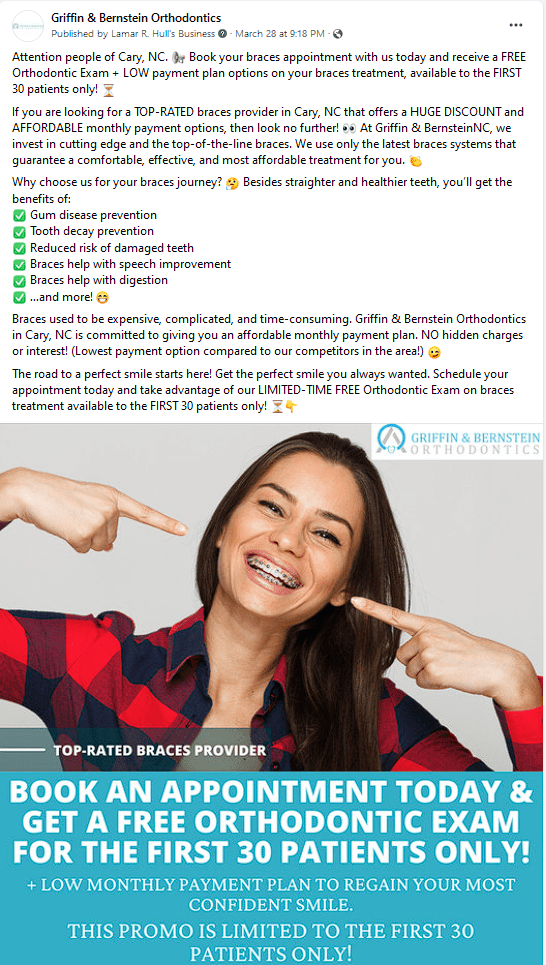
3. Crafting Effective Facebook Ads for Orthodontic Practices
3.1 Choosing the right ad format and objective
When creating Facebook ads for orthodontic practices, it is important to choose the right ad format and objective to effectively convey the message and achieve the desired outcome. Facebook offers a variety of ad formats, including image ads, video ads, carousel ads, and more.
For orthodontic practices, visually appealing ad formats like image ads and videos can effectively showcase the results of orthodontic treatment and capture the attention of potential patients. Orthodontists can use before-and-after images or testimonials to illustrate the transformation that can be achieved through orthodontic treatment.
In terms of ad objectives, orthodontic practices can select objectives that align with their marketing goals, such as driving website traffic, generating leads, or increasing brand awareness. By choosing the right ad format and objective, orthodontists can create ads that effectively communicate their message and prompt potential patients to take the desired action.
3.2 Writing compelling ad copy and headlines
In addition to visually appealing ad formats, well-written ad copy and headlines are crucial for grabbing the attention of potential patients and conveying the unique value proposition of the orthodontic practice. Orthodontists should focus on crafting compelling and concise messages that highlight the benefits of orthodontic treatment and differentiate their practice from competitors.
Ad copy and headlines should be clear, concise, and capture the reader’s attention within the limited space available on Facebook ads. Orthodontists should emphasize the pain points of potential patients, such as crooked teeth or low self-confidence, and position orthodontic treatment as the solution to those pain points. Additionally, orthodontists can include any special promotions, discounts, or unique services they offer to incentivize potential patients to take action.
3.3 Incorporating eye-catching visuals and videos
Visuals are a critical component of Facebook ads, as they are often the first thing that catches the user’s attention while scrolling through their newsfeed. Orthodontists should incorporate eye-catching visuals that showcase the results of orthodontic treatment and highlight the positive impact it can have on a person’s smile and confidence.
Orthodontists can use before-and-after images of actual patients to demonstrate the transformation that can be achieved through orthodontic treatment. This can be particularly effective in capturing the attention of potential patients who may be considering orthodontic treatment but are unsure about the potential results.
In addition to images, orthodontists can also incorporate videos into their Facebook ads. Videos allow orthodontists to provide more in-depth information about their practice, showcase patient testimonials, or even provide educational content about orthodontic treatment options. Engaging videos can help build trust and credibility, increasing the likelihood of potential patients choosing the orthodontic practice for their treatment needs.
3.4 Using testimonials and before/after images to build trust
Building trust is crucial when marketing orthodontic services, as patients often seek reassurance before committing to treatment. Orthodontists can leverage the power of testimonials and before/after images in their Facebook ads to showcase the positive experiences and results of past patients.
Testimonials can be in the form of quotes, video interviews, or written narratives from satisfied patients who have undergone orthodontic treatment. By including real-life testimonials, orthodontists can demonstrate the credibility and effectiveness of their practice, helping potential patients feel more confident about choosing their services.
Before/after images, as mentioned earlier, are powerful visual representations of the results achieved through orthodontic treatment. By including these images in the ads, orthodontists can provide tangible evidence of the positive changes that can occur with orthodontic care. Visual proof helps build trust and provides potential patients with a clear understanding of the potential outcome of their own treatment.
3.5 Implementing a strong call-to-action in your ads
Every Facebook ad for an orthodontic practice should contain a strong call-to-action (CTA) that prompts potential patients to take the desired action. Whether it is booking a consultation, calling the practice, or filling out a contact form, orthodontists should clearly and prominently display the CTA in their ads.
The CTA should be concise and compelling, clearly conveying the value of taking the desired action. Orthodontists can use action-oriented language, such as “Book Your Free Consultation Today” or “Transform Your Smile” to create a sense of urgency and motivate potential patients to take the next step. Including contact information, such as a phone number or clickable link, allows potential patients to easily reach out and initiate the process of scheduling an appointment.
3.6 A/B testing ad variations for optimal performance
To optimize the performance of Facebook ads, orthodontic practices should conduct A/B testing to compare different ad variations and determine which elements are most effective in achieving their desired goals. A/B testing involves creating multiple versions of an ad with slight variations in elements such as the headline, ad copy, image, or CTA.
By running A/B tests, orthodontists can gather valuable data on which ad variations resonate best with their target audience and drive the highest engagement and conversion rates. This allows them to make data-driven decisions and continuously refine their ads to maximize their effectiveness. A/B testing is an ongoing process, and by continuously experimenting with different ad variations, orthodontists can refine their marketing strategy and achieve optimal results.
4. Setting Up Facebook Ad Campaigns
4.1 Creating a Facebook Business Manager account
Before setting up Facebook ad campaigns, orthodontic practices should create a Facebook Business Manager account. Facebook Business Manager is a powerful tool that allows businesses to manage their Facebook pages, ad accounts, and advertising campaigns in one centralized platform.
To create a Facebook Business Manager account, orthodontic practices can visit the Facebook Business Manager website and follow the step-by-step instructions. Creating a Facebook Business Manager account enables orthodontists to easily manage their ad campaigns, collaborate with team members, and access valuable insights and analytics.
4.2 Setting up a Facebook Ads Manager account
Once the Facebook Business Manager account is set up, orthodontic practices can create a Facebook Ads Manager account to start managing their ad campaigns. Facebook Ads Manager provides a comprehensive platform for creating, managing, and optimizing ad campaigns.
Practices can access Facebook Ads Manager through the Facebook Business Manager dashboard. By navigating to the Ads Manager section, orthodontists can create a new ad account and link it to their Facebook Business Manager account. This account will serve as the hub for managing all aspects of their Facebook ad campaigns, including budgeting, targeting, and ad creation.
4.3 Defining campaign objectives and budgeting
Before launching a Facebook ad campaign, orthodontists should define their campaign objectives and allocate a budget. Facebook offers a variety of campaign objectives, such as brand awareness, lead generation, website traffic, or conversions. Orthodontists should select the objective that aligns with their specific marketing goals and desired outcomes for the campaign.
Once the campaign objective is defined, orthodontists can set a budget for their ad campaign. The budget can be set on a daily or lifetime basis, and orthodontists can also set a schedule for their ads to run. It is important to consider the overall marketing budget and allocate a sufficient amount to ensure the campaign can effectively reach the target audience and achieve the desired results.
4.4 Building ad sets and selecting targeting options
After defining the campaign objectives and budget, orthodontists can proceed to build ad sets within their Facebook Ads Manager account. Ad sets are groups of ads that share the same targeting options, enabling orthodontists to reach specific segments of their target audience.
Within each ad set, orthodontists can select various targeting options, such as demographic targeting (age, gender, location), interest targeting (relevant topics, brands, behaviors), and custom audience targeting (retargeting website visitors or previous engagers). By selecting the most relevant targeting options, orthodontists can ensure their ads are shown to individuals who are more likely to be interested in orthodontic treatment and increase the chances of conversion.
4.5 Optimizing ad delivery and scheduling
To optimize the delivery of their Facebook ads, orthodontic practices can leverage Facebook’s ad delivery optimization tools. These tools allow orthodontists to define the target audience, budget, and schedule for their ads, ensuring they are shown to the right people at the right time.
Orthodontists can set delivery optimization options such as ad placement (Facebook feeds, Instagram, Audience Network), ad scheduling (specific days or times), and ad delivery optimization (link clicks, impressions, conversions). By aligning ad delivery with the desired objectives and target audience behavior, orthodontists can increase the efficiency and effectiveness of their ad campaigns.
4.6 Monitoring ad performance and making necessary adjustments
After launching a Facebook ad campaign, it is essential for orthodontic practices to continuously monitor its performance and make necessary adjustments based on the data insights provided by Facebook Ads Manager. Monitoring key metrics such as reach, engagement, click-through rates, and conversion rates allows orthodontists to identify areas of improvement and make data-driven decisions.
Orthodontists can utilize the performance data to identify underperforming ads or targeting options and adjust them as needed. This may involve refining ad copy, changing targeting criteria, or reallocating the budget to more successful ad sets. By actively managing and optimizing their ad campaigns, orthodontic practices can achieve better results and maximize the return on their advertising investment.
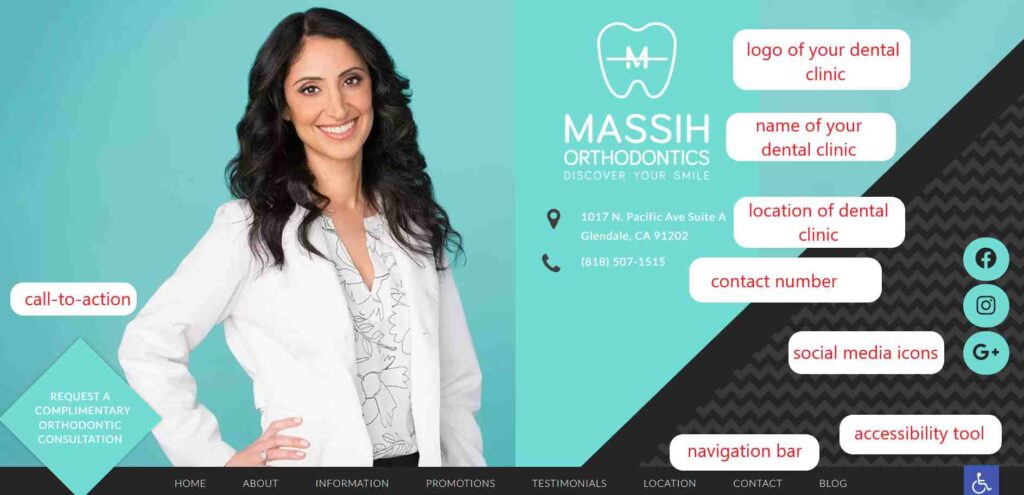
5. Maximizing the Effectiveness of Facebook Ads
5.1 Implementing retargeting strategies for increased conversions
Retargeting is a powerful strategy that allows orthodontic practices to re-engage individuals who have previously interacted with their practice or shown interest in their services. By implementing retargeting strategies, orthodontists can increase the chances of converting potential patients who may not have taken immediate action after seeing their initial ads.
Retargeting can be done through the use of a Facebook Pixel, a small piece of code that tracks website visitors and allows orthodontists to show them relevant ads as they continue to browse Facebook. Orthodontists can create custom audiences based on website visitors and display retargeting ads that remind potential patients about their services or offer incentives to encourage conversion.
5.2 Utilizing Facebook Pixel for tracking and measuring success
Facebook Pixel is not only valuable for retargeting purposes but also for tracking and measuring the success of Facebook ad campaigns. By installing Facebook Pixel on their website, orthodontic practices can gather detailed insights and analytics about user behavior, conversions, and the overall effectiveness of their ads.
With Facebook Pixel, orthodontists can track the actions users take after clicking on their ads, such as booking a consultation or making a purchase. This data can help identify which ads, targeting options, or ad elements are driving the highest conversion rates, enabling orthodontists to make data-driven decisions and optimize their ad campaigns for better results.
5.3 Integrating lead generation forms for effective lead capture
Lead generation is an essential aspect of orthodontic marketing, and Facebook offers a convenient solution for capturing leads through the use of lead generation forms. Lead generation forms are pre-filled forms that pop up directly within Facebook ads, allowing potential patients to easily submit their contact information without navigating away from the platform.
Orthodontic practices can create lead generation forms that ask for basic information such as name, email address, and phone number. By integrating lead generation forms into their ads, practices can streamline the lead capture process and generate a database of potential patients who have expressed interest in their services. These leads can then be followed up with through email marketing or phone calls to convert them into patients.
5.4 Leveraging Facebook’s Lookalike Audiences feature
Facebook offers a powerful feature called Lookalike Audiences, which allows orthodontic practices to reach new people with similar characteristics to their existing customers or website visitors. Lookalike Audiences can help expand the reach of orthodontic ads and attract individuals who are likely to be interested in orthodontic treatment based on their similarities to the existing audience.
To create Lookalike Audiences, orthodontists can provide Facebook with a list of their existing customer emails or install Facebook Pixel on their website to capture user data. Facebook then uses this information to identify commonalities among the existing audience and finds new individuals who match these characteristics. By leveraging Lookalike Audiences, orthodontists can increase the effectiveness of their ad campaigns and attract new patients who are more likely to convert.
5.5 Partnering with influencers and running collaborative campaigns
Influencer marketing has gained significant traction in recent years and can be a valuable strategy for orthodontic practices. By partnering with influencers who have a strong online presence and a relevant audience, orthodontists can leverage their influence to promote their services and reach a wider audience.
When collaborating with influencers, orthodontists should identify influencers who align with their brand values and have an audience that matches their target demographic. Partnerships can involve sponsored posts, video reviews, or even live streaming events featuring the influencer. By leveraging the influence and reach of these individuals, orthodontic practices can increase brand visibility, attract new patients, and build trust with their target audience.
5.6 Engaging with the audience through comments and Messenger
Engaging with the audience is a crucial aspect of Facebook marketing for orthodontic practices. A simple yet effective way to engage with potential patients is by responding to comments on Facebook ads or posts. Addressing inquiries, providing additional information, or simply showing appreciation for positive feedback can help build relationships and trust with potential patients.
Orthodontic practices can also utilize Facebook Messenger to communicate with potential patients in a more personalized and direct manner. Facebook Messenger allows for one-on-one conversations, enabling practices to answer questions, provide further details about their services, or schedule consultations. By being responsive and proactive in engaging with potential patients, orthodontic practices can create a positive impression and increase the likelihood of conversion.
6. Analyzing and Optimizing Facebook Ad Performance
6.1 Understanding key metrics and performance indicators
Analyzing the performance of Facebook ads requires a comprehensive understanding of key metrics and performance indicators. By monitoring and analyzing these metrics, orthodontic practices can gain valuable insights into the effectiveness of their ad campaigns and make data-driven decisions to optimize their performance.
Key metrics to track include reach (the number of people who see the ads), impressions (the number of times the ads are shown), click-through rate (the percentage of people who click on the ads), conversion rate (the percentage of people who take the desired action on the website), and cost per conversion (the average cost of acquiring a new patient). These metrics provide insights into the overall reach, engagement, and conversion effectiveness of the ad campaigns.
6.2 Analyzing ad data and identifying areas for improvement
After gathering performance data from Facebook Ads Manager, orthodontic practices should conduct a thorough analysis to identify areas for improvement. This involves comparing the performance of different ads, ad sets, and targeting options to determine which elements are driving the highest engagement and conversion rates.
Orthodontists can analyze the data to identify any underperforming ads or targeting options that may need to be adjusted. For example, if an ad set is receiving a low click-through rate, orthodontists can experiment with different targeting options or ad variations to see if it improves the performance. By analyzing the data and making necessary adjustments, orthodontic practices can continuously improve the effectiveness of their ads and achieve better results.
6.3 Split testing different ad elements for better results
Split testing, also known as A/B testing, is a valuable technique for optimizing Facebook ad performance. By testing different ad elements, such as headlines, ad copy, images, or targeting options, orthodontic practices can gather data to determine which variations resonate best with their target audience and drive higher engagement and conversion rates.
Orthodontists can create multiple versions of an ad with slight variations in the elements they want to test. Facebook Ads Manager allows practices to split the ad sets and allocate a portion of the budget to each variation. By comparing the performance of the different versions, orthodontists can identify the best-performing ad elements and make informed decisions to optimize future ad campaigns.
6.4 Adjusting ad targeting based on data insights
Data insights from Facebook Ads Manager can provide valuable information about the effectiveness of ad targeting options. Orthodontic practices should closely analyze the data to identify any trends or patterns in audience engagement and conversion rates.
If certain targeting options are consistently underperforming, orthodontists can consider refining or expanding their targeting criteria. This may involve experimenting with different demographics, interests, or behaviors to reach a more receptive audience. By adjusting ad targeting based on data insights, orthodontic practices can optimize the effectiveness of their ad campaigns and increase the likelihood of attracting quality leads.
6.5 Implementing remarketing campaigns to re-engage potential patients
Remarketing campaigns are an effective strategy for re-engaging potential patients who have previously interacted with the orthodontic practice but have not taken immediate action. By targeting individuals who have visited the practice’s website or engaged with previous ads, orthodontists can remind them about their services and encourage them to convert.
Orthodontic practices can create custom audiences based on website visitors or engagement with specific ad campaigns. By designing remarketing ads that highlight incentives, promotional offers, or new services, practices can effectively re-engage potential patients and increase the chances of conversion. Remarketing campaigns can be an essential component of an overall marketing strategy, helping orthodontic practices achieve higher conversion rates and ROI.
6.6 Scaling successful campaigns and optimizing the budget
As orthodontic practices identify successful ad campaigns that consistently drive high engagement and conversion rates, they can consider scaling those campaigns to reach a larger audience. Scaling involves increasing the budget allocation and targeting options to expand the reach of the successful campaigns.
Orthodontists should closely monitor the performance of scaled campaigns to ensure that they continue to deliver the desired results. It may be necessary to regularly review and optimize the targeting options, ad elements, or budgets to maintain the effectiveness of the campaigns. By scaling successful campaigns and optimizing the budget, orthodontic practices can maximize their advertising efforts and attract a steady stream of new patients.
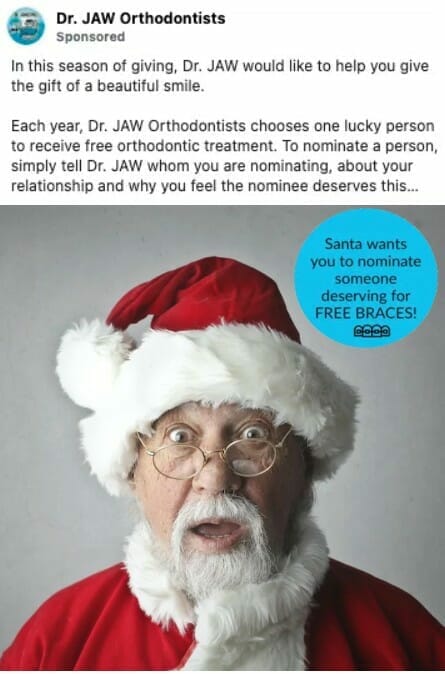
7. Staying Up-to-Date with Facebook Advertising Trends
7.1 Exploring upcoming features and updates on Facebook Ads
Facebook is constantly evolving its advertising platform, introducing new features and updates to enhance the effectiveness of ad campaigns. Orthodontic practices should stay up-to-date with the latest advancements in Facebook Ads to leverage new opportunities and stay competitive.
Orthodontists can explore resources such as the Facebook Business blog, webinars, or industry events to learn about upcoming features, best practices, and success stories from other businesses. By staying informed about the latest trends and innovations, orthodontists can adapt their marketing strategies to take full advantage of the opportunities provided by Facebook Ads.
7.2 Incorporating video content and live streaming in ad campaigns
Video content has become increasingly popular on social media platforms, including Facebook. Orthodontic practices can incorporate video content and live streaming in their ad campaigns to attract attention and engage with their target audience.
Videos can be used to showcase the practice’s services, provide educational content about orthodontic treatment options, or feature patient testimonials. Live streaming events, such as Q&A sessions or behind-the-scenes footage of the practice, can help create a sense of authenticity and further engage potential patients. By embracing video content and live streaming, orthodontic practices can captivate their audience and deliver their marketing message in a more dynamic and engaging way.
7.3 Utilizing Messenger bots for improved customer engagement
Messenger bots, also known as chatbots, can be a valuable asset for orthodontic practices seeking to improve customer engagement and streamline communication. Messenger bots are automated messaging tools that can provide instant responses and assistance to common inquiries or guide potential patients through the initial phases of their interaction with the practice.
Orthodontic practices can integrate Messenger bots into their Facebook ads to provide immediate responses to questions, offer appointment scheduling assistance, or provide general information about the practice’s services. By utilizing Messenger bots, practices can enhance customer engagement, improve response times, and ultimately increase the chances of converting potential patients.
7.4 Keeping an eye on industry benchmarks and best practices
To stay ahead in the competitive field of orthodontic marketing, orthodontic practices should actively monitor industry benchmarks and best practices. By understanding the performance metrics and benchmarks specific to the orthodontic industry, practices can set realistic goals and make informed decisions to improve their ad campaigns.
Orthodontists can leverage industry resources, such as industry-specific publications, webinars, or conferences, to gain insights into successful strategies and learn from the experiences of other practices. Benchmarking against industry standards and best practices helps orthodontic practices compare their performance and identify areas for improvement, ensuring that they stay competitive and achieve their marketing objectives.
7.5 Embracing mobile-first strategies for better reach and visibility
Mobile usage continues to dominate digital media consumption, making it crucial for orthodontic practices to embrace mobile-first strategies in their Facebook ad campaigns. Orthodontists should ensure that their ads are optimized for viewing and interacting on mobile devices to maximize reach and visibility.
Mobile-first strategies involve designing ad creatives that are visually appealing and easy to navigate on smaller screens. Orthodontists should pay attention to the placement of text, images, and CTAs to ensure they are clearly visible and functional on mobile devices. By embracing mobile-first strategies, orthodontic practices can effectively reach potential patients who predominantly use mobile devices for their online activities.
8. Hiring a Professional Facebook Ads Agency for Orthodontists
8.1 The advantages of outsourcing Facebook ad management
While orthodontic practices can manage their Facebook ad campaigns themselves, there are several advantages to outsourcing the task to a professional Facebook Ads agency. These agencies specialize in managing Facebook ads, keeping up with the latest trends and best practices to optimize campaign performance.
By hiring a Facebook Ads agency, orthodontic practices can benefit from the expertise and experience of professionals who understand the intricacies of Facebook advertising. Agencies can provide strategic guidance, help with ad creation, targeting optimizations, and ongoing campaign management. Outsourcing ad management allows orthodontists to focus on their core competencies while leveraging the expertise of professionals to maximize the effectiveness of their Facebook ad campaigns.
8.2 Factors to consider when choosing a Facebook ads agency
When selecting a Facebook Ads agency for orthodontic practices, it is important to consider several factors to ensure a successful partnership. Orthodontists should evaluate the agency’s experience and track record in managing Facebook ads for similar businesses in the healthcare or dental industry.
Additionally, orthodontists should assess the agency’s strategies for targeting, ad design, and optimization. It is crucial to find an agency that aligns with the practice’s goals and has a proven track record of delivering results. Clear communication, transparency, and the ability to provide regular performance reports are also important considerations when choosing a Facebook Ads agency.
8.3 Case studies and success stories of orthodontists utilizing agencies
To gain more confidence in the capabilities of a Facebook Ads agency, orthodontic practices should review case studies and success stories of orthodontists who have worked with the agency in the past. Case studies provide concrete examples of how the agency has delivered results for other businesses in the industry.
Orthodontists should look for case studies that highlight the agency’s ability to drive engagement, increase conversions, and generate positive ROI. By reviewing these success stories, orthodontic practices can gain insights into the agency’s approach, strategies, and the potential results they can expect from a partnership.
8.4 Tips for effectively collaborating with a Facebook ads agency
Effective collaboration with a Facebook Ads agency is essential for achieving the desired results. Orthodontic practices should establish clear communication channels with the agency, setting expectations and providing any necessary information about the practice’s unique value propositions, target audience, and marketing goals.
Regular check-ins and progress updates allow orthodontists to stay informed about the performance of their ad campaigns and make informed decisions. Practices should also provide feedback and insights to the agency, helping them understand the practice’s specific needs and preferences. By maintaining open and proactive communication, orthodontic practices can ensure a productive and successful collaboration with their Facebook Ads agency.
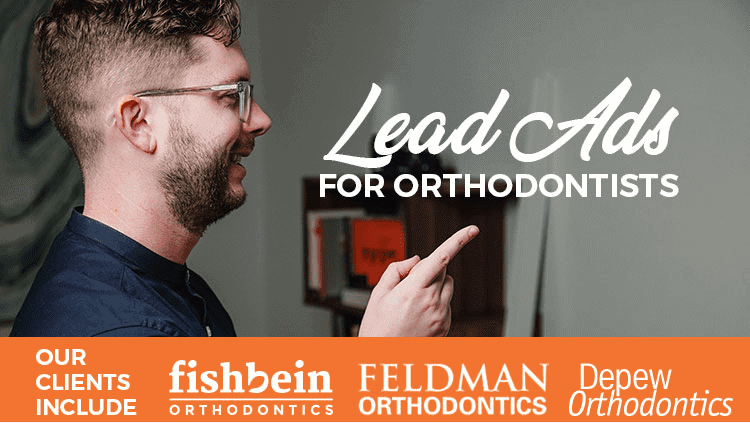
9. Legal Considerations and Compliance for Facebook Ads
9.1 Adhering to privacy and data protection regulations
Orthodontic practices must prioritize privacy and data protection when running Facebook ad campaigns. They should be aware of and comply with applicable privacy laws and regulations, ensuring that they handle personal data in a secure and lawful manner.
Practices should have a clear privacy policy in place, stating how they collect, store, and process personal information obtained through Facebook ads. It is important to obtain consent from individuals before collecting their personal data and to implement appropriate data protection measures to safeguard this information. By adhering to privacy and data protection regulations, orthodontic practices build trust with potential patients and maintain a positive reputation.
9.2 Ensuring compliance with orthodontic advertising guidelines
In addition to privacy and data protection regulations, orthodontic practices must also comply with orthodontic advertising guidelines set forth by professional regulatory bodies. These guidelines outline the ethical standards and best practices for advertising orthodontic services.
Orthodontic practices should review their local or regional advertising guidelines and ensure that all Facebook ads align with these standards. This may include avoiding false or misleading claims, accurately representing the potential outcomes of treatment, and maintaining professionalism and integrity in all ad content. Complying with advertising guidelines not only ensures legal compliance but also helps build trust and credibility among potential patients.
9.3 Avoiding false or misleading claims in ad campaigns
Orthodontic practices must be truthful and transparent in their Facebook ad campaigns and avoid making false or misleading claims. Advertisements should accurately represent the services offered, the potential outcomes of treatment, and any special offers or promotions.
Practices should avoid exaggerating the benefits of orthodontic treatment or making unsupported claims about the effectiveness of their services. It is important to provide accurate information and manage patient expectations. By maintaining honesty and integrity in their ad campaigns, orthodontic practices build trust with potential patients and ensure compliance with advertising regulations.
9.4 Including proper disclaimers and disclosures in ads
Orthodontic practices should include proper disclaimers and disclosures in their Facebook ads to provide relevant information and protect themselves legally. Disclaimers help clarify any limitations or exceptions to the claims made in the ads, ensuring that potential patients have a clear understanding of the practice’s services.
Disclosures may be necessary to disclose any material relationships, affiliations, or incentives involved in the ads, such as paid partnerships with influencers or promotional offers. By including proper disclaimers and disclosures, orthodontic practices demonstrate transparency and compliance with advertising regulations, reinforcing trust with potential patients.
10. Conclusion
10.1 Summary of key takeaways and insights
Facebook ads have become a powerful tool for orthodontic practices to effectively reach their target audience and promote their services. By utilizing the extensive targeting options, visually appealing ad formats, and data-driven optimizations that Facebook offers, practices can attract new patients and achieve their marketing objectives.
Throughout this comprehensive guide, we have explored the importance of Facebook ads for orthodontists, the process of defining a target audience, crafting effective ads, setting up campaigns, and analyzing performance. We have also discussed the various strategies and tactics that orthodontic practices can employ to maximize the effectiveness of their Facebook ad campaigns and stay up-to-date with industry trends.
10.2 Emphasizing the importance of Facebook ads for orthodontists
In conclusion, Facebook ads have emerged as an essential component of orthodontic marketing strategies. The rise of digital marketing and the vast reach and targeting capabilities offered by Facebook make it a powerful platform for orthodontists to connect with potential patients, convey their unique value proposition, and drive conversions.
Facebook ads provide orthodontic practices with numerous benefits, including cost-effectiveness, precise targeting options, and the ability to analyze and optimize campaign performance. By understanding the intricacies of Facebook ads, utilizing best practices, and continuously refining their strategies based on data insights, orthodontic practices can leverage the power of Facebook marketing to attract new patients, increase brand awareness, and ultimately grow their practice.
10.3 Encouraging orthodontic practices to leverage the power of Facebook marketing
In conclusion, I encourage orthodontic practices to embrace the potential of Facebook ads in their marketing efforts. The comprehensive guide outlined the importance of digital marketing, the benefits of Facebook ads, and various strategies to optimize campaign performance.
By understanding and implementing the insights shared in this guide, orthodontic practices can effectively reach their target audience, build trust, and convert potential patients. Whether by leveraging the precise targeting options, creating compelling ad content, or keeping up-to-date with the latest trends, orthodontic practices can harness the power of Facebook marketing to drive success and achieve their marketing goals.

